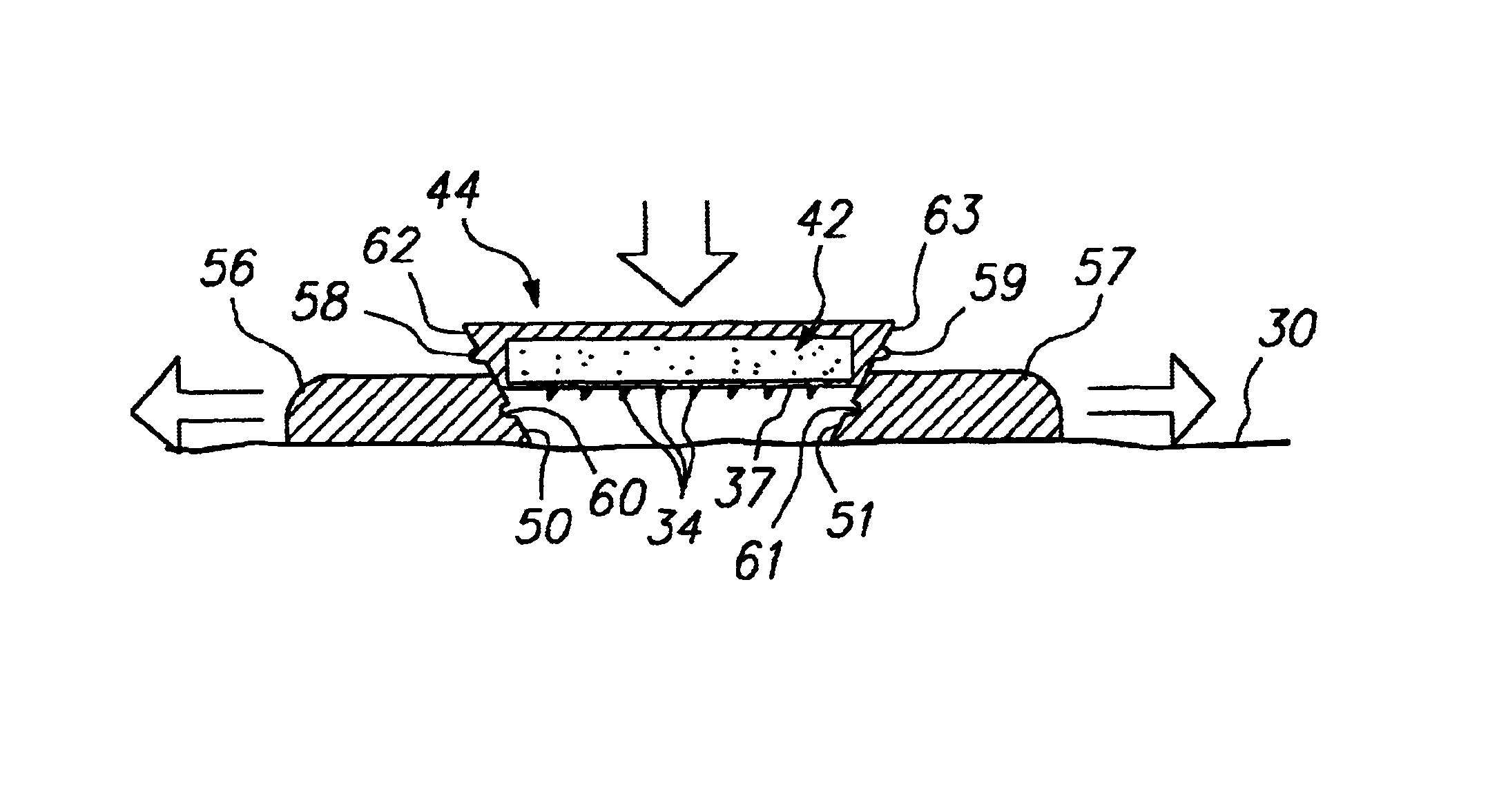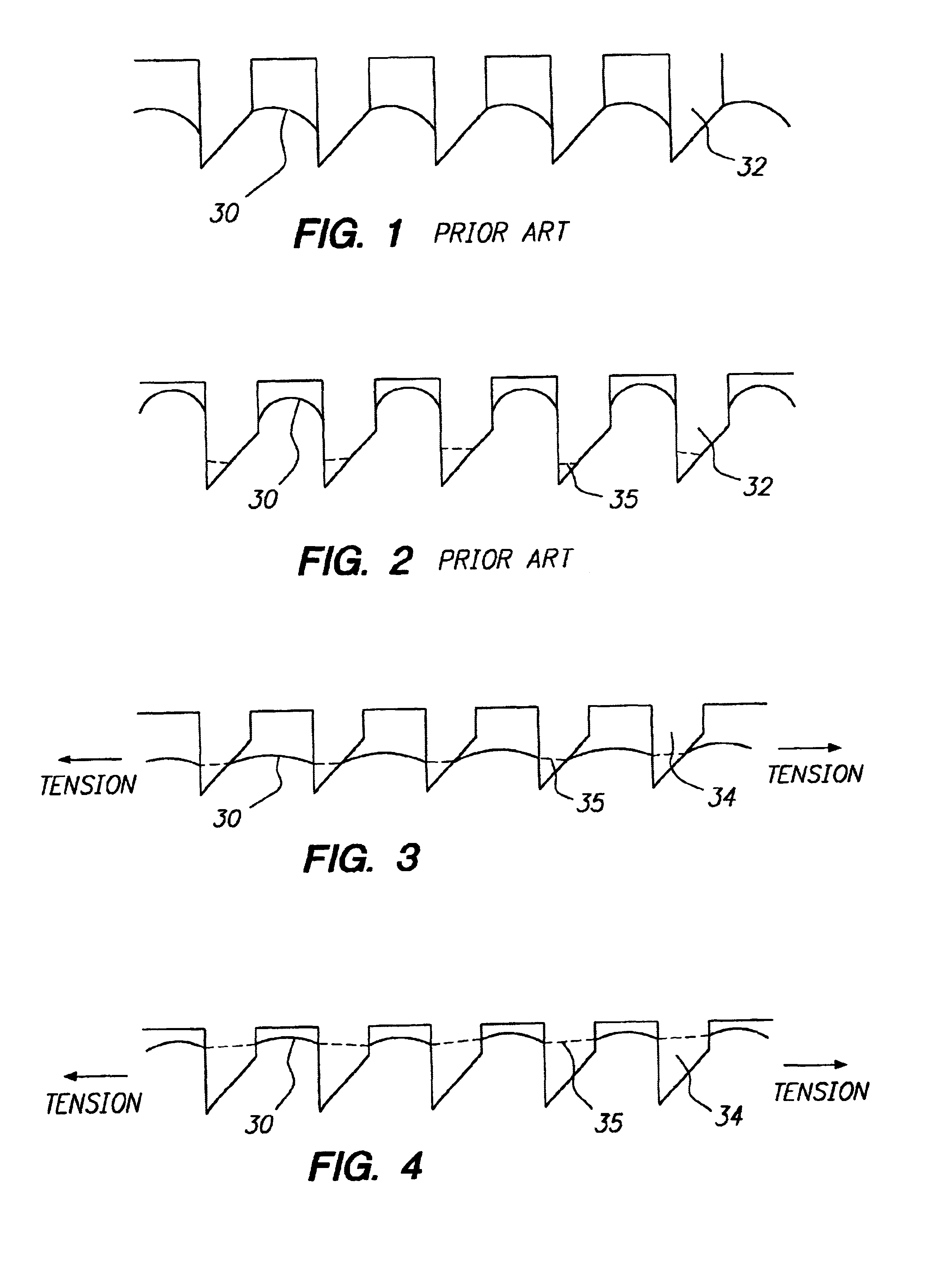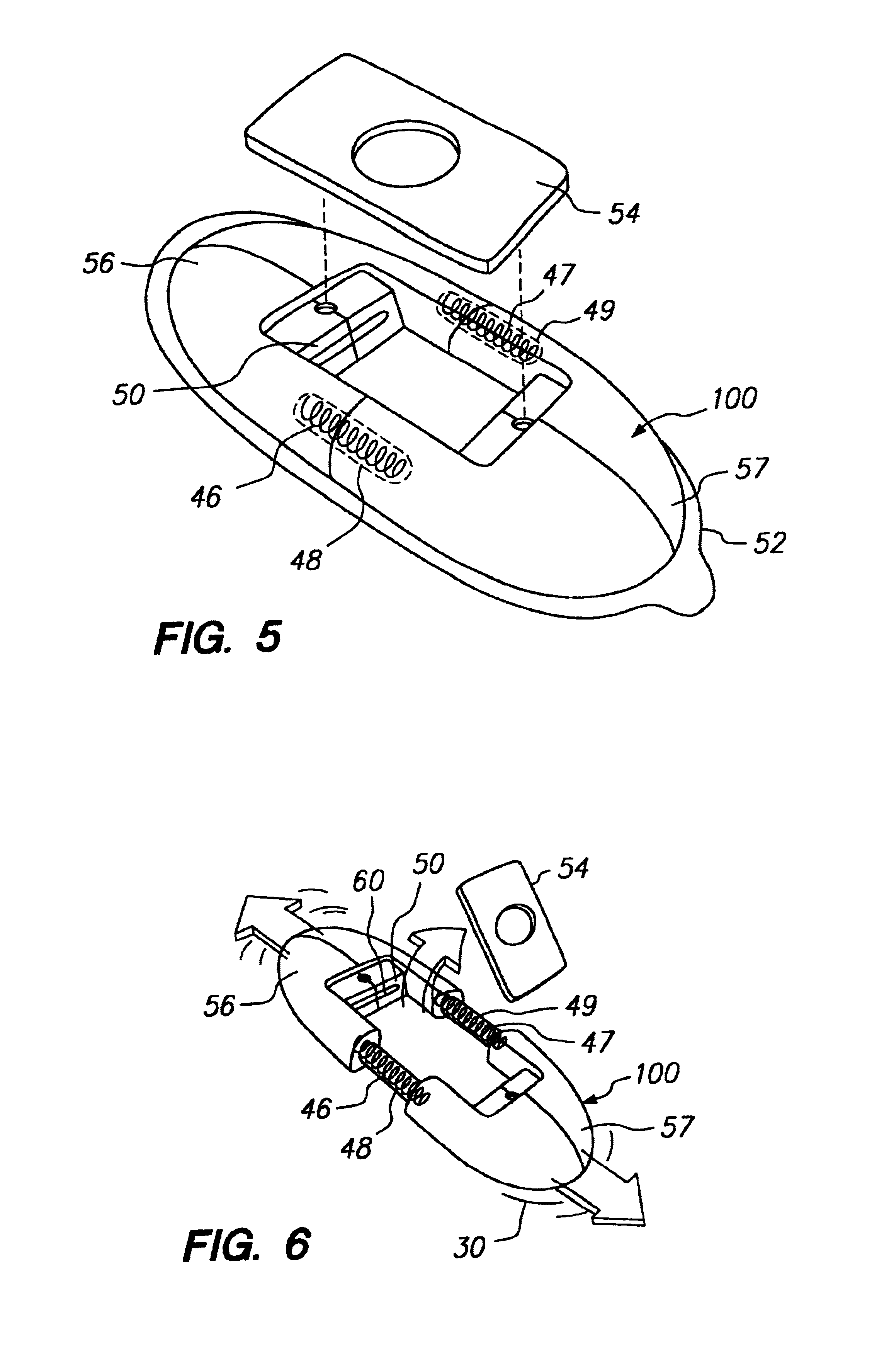Device and method for enhancing skin piercing by microprotrusions
a microprotrusion and skin technology, applied in the field of transdermal agent delivery, can solve the problems of insufficient rate of delivery or flux of polypeptides through the skin to produce a desired therapeutic effect, inability to achieve the desired effect, and easy degradation of polypeptides and proteins, etc., to achieve less compliant, improve penetration, and the degree of tension under which the skin is placed is much more critical
- Summary
- Abstract
- Description
- Claims
- Application Information
AI Technical Summary
Benefits of technology
Problems solved by technology
Method used
Image
Examples
example 1
[0067]To determine the effect of stretching the skin during application of a transdermal delivery device having skin piercing microprotrusions along a skin-contacting surface of the device, the following experiment was performed.
[0068]Excised hairless guinea pig skin was pierced, under stretched and unstretched conditions, using a microprotrusion array having a configuration similar to that shown in FIG. 9. The sheet 36 was stainless steel having a thickness of 25 μm. The microprotrusions 34 had a length of 300 μm, a width of 190 μm and were triangularly shaped, with the tip of each microprotrusion having an angle of 35°. The microprotrusion density was 73 microprotrusions / cm2. The stretched samples were manually stretched bi-directionally ( and ) and pinned on cork. The bi-directional stretching was estimated to achieve a skin tension of between 0.1 and 1 M Pa. The microprotusion array was then applied and removed. The treated sites were then covered with an agent reservoir contain...
example 2
Skin Extensibility Evaluation:
[0072]Skin extensibility was evaluated in humans using a CUTOMETER SEM 575® (COURAGE+KAHZAKA electronic, GmbH, Koln, Germany) which is conventionally used for measuring skin elasticity in dermatoglogical applications. The CUTOMETER probe (a metal cylinder having a length of about 10 cm, an outside diameter of 3 cm and an inside diameter of 6 mm) was applied on the ventral forearm of four female and four male volunteers ages 26 to 42 years to measure skin extensibility (E). The CUTOMETER applies a negative pressure of 0.5 bar through the inner (6 mm diameter) opening of the probe which is pressed against the skin. The negative pressure causes the skin to be drawn into the probe opening. The CUTOMETER measures the distance the skin is drawn into the probe and provides a skin extensibility (E) measurement in units of distance (mm). Skin extensibility was measured in a normal (i.e., non-stretched) condition as well as under bi-directional ( and ) manual str...
example 3
Effect of Skin Stretching on Transdermal Lisinopril Flux:
[0074]The drug lisinopril does not penetrate the skin significantly without the use of penetration enhancers or physical disruption of the skin barrier. In this experiment, lisinopril was delivered by passive diffusion through pathways in the skin created by an array of microprotrusions. The purpose of the experiment was to show that stretching the skin prior to pretreatment with the microprotrusion array improved flux of the drug through the skin in vivo.
[0075]In one group of 12 hairless guinea pigs the skin of one flank was stretched manually bi-directionally ( and ) before application of a foam double adhesive ring having a thickness of 0.8 mm ( 1 / 32 inch) with a 2 cm2 hole in the middle which would later contain the drug. The bi-directional stretching was estimated to achieve a skin tension of between 0.1 and 1 M Pa. The adhesive ring served to keep the skin under the drug compartment in the stretched configuration. Next, ...
PUM
 Login to View More
Login to View More Abstract
Description
Claims
Application Information
 Login to View More
Login to View More - R&D
- Intellectual Property
- Life Sciences
- Materials
- Tech Scout
- Unparalleled Data Quality
- Higher Quality Content
- 60% Fewer Hallucinations
Browse by: Latest US Patents, China's latest patents, Technical Efficacy Thesaurus, Application Domain, Technology Topic, Popular Technical Reports.
© 2025 PatSnap. All rights reserved.Legal|Privacy policy|Modern Slavery Act Transparency Statement|Sitemap|About US| Contact US: help@patsnap.com



